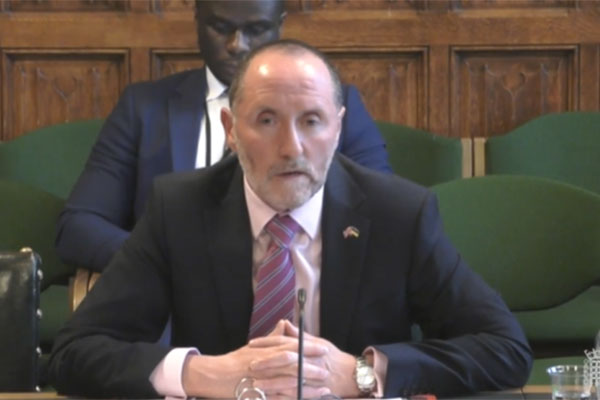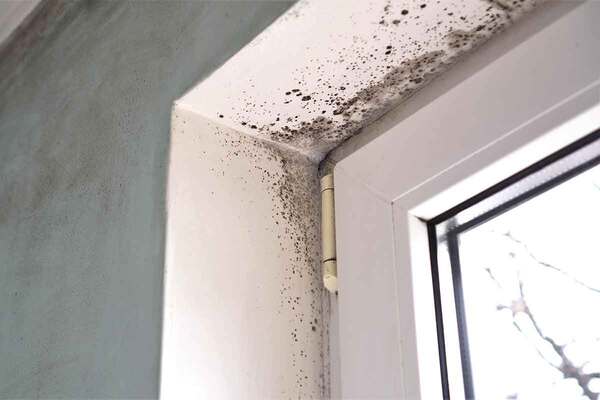Toddler’s death from mould exposure should be ‘defining moment’ for housing sector, coroner says
The death of a two-year-old boy from mould exposure in a flat in Lancashire should be seen as a “defining moment” for the housing sector, a coroner has said.
In her report, senior coroner Joanne Kearsley concluded that Awaab Ishak died on 21 December 2020 as a result of a severe respiratory condition caused by “prolonged exposure” to mould in his home.
She said that during his life the toddler had been exposed to environmental mould which had formed at his home in Rochdale.
The one-bedroom flat had inadequate ventilation and was not equipped for normal day-to-day living activities, which led to excess damp and condensation, the coroner concluded.
The mould had been reported to Rochdale Boroughwide Housing (RBH), the landlord of the property, in 2017, the report said.
The organisation advised Awaab Ishak’s father, Faisal Abdullah, to paint over the mould, but the coroner said this was not effective as it did not address the underlying cause of the mould.
The coroner said that too much emphasis was placed on the mould being a result of the parents’ lifestyle and that RBH did not identify the lack of an adequate ventilation system as a factor.
Ms Kearsley said remedial works to treat and remove the existing mould should have been undertaken, but because of an ongoing disrepair claim no remedial action was taken.
The coroner said that the lack of action meant Awaab continued to be exposed to harmful mould between July 2020 and December 2020.
Ms Kearsley also said she heard evidence that in 2020 there were numerous different IT systems in use within RBH and not everyone who had contact with the family would have had access to the same information.
Therefore, some RBH employees would not have been aware of the concerns raised and others may not have been aware that a child lived in the property, she added.
During the conclusion of the inquest hearing, Ms Kearsley said that Awaab’s death will be a “defining moment” for the housing sector.
She said: “I’m sure I’m not alone in having thought, ‘How does this happen? How, in the UK in 2020, does a two-year-old child die from exposure to mould in his home?’
“The tragic death of Awaab will and should be a defining moment for the housing sector in terms of increasing knowledge, increasing awareness and a deepening of understanding surrounding the issue of damp and mould.”
Gareth Swarbrick, chief executive of RBH, said that he is “truly devastated” about Awaab’s death and the things the housing association got wrong.
He said RBH did not recognise the level of risk to a child’s health from the mould in the family’s home and allowed a legal disrepair process to get in the way of promptly tackling the mould.
Mr Swarbrick said the housing association must make sure this can never happen again and will share what it has learned about the impact of damp, mould and condensation on health.
He said that the coroner had recognised the changes the housing association has made to its procedures, IT, communications and training.
Mr Swarbrick added that RBH supports the coroner and the Housing Ombudsman’s call for the government’s Decent Homes Standard to be strengthened to include damp and mould. He said the housing association also supports the coroner’s decision to write to government ministers about this.
Mr Swarbrick said: “We know that nothing we can say will bring Awaab back or be of any consolation to his family. We have and will continue to learn hard lessons from this.
“We must make sure this can never happen again. Awaab’s death needs to be a wake-up call for everyone in housing, social care and health.
“We agree with the coroner that the tragic death of Awaab will be and should be a defining moment for the housing sector.”
Housing secretary Michael Gove said yesterday he had asked Mr Swarbrick to come to see him to “explain himself” as it was an “unacceptable tragedy”.
He added: “It beggars belief that this guy is still in office.”
The government is currently introducing legislation aimed at improving the experience of tenants through the Social Housing (Regulation) Bill.
Meanwhile, the housing ombudsman has today taken action to fast-track investigations into three other complaints involving RBH.
In a letter to Mr Swarbrick, the housing ombudsman Richard Blakeway said he has also instructed his staff to use powers that will allow them to interview the landlord’s staff. It will be the first time these powers have been used.
Powers will also be used to carry out a further investigation to see if one of the complaints is "indicative of wider failure within the landlord", the letter said.
In October 2021, the housing ombudsman published a report highlighting issues relating to damp and mould in the sector.
The coroner said that Mr Blakeway told the court this report was produced because he noted an increasing number of complaints about damp and mould.
He explained that one of these themes was an over-reliance on a tenant’s lifestyle as a cause of the problem.
In July this year, the ombudsman said that it was also planning an investigation into the “systemic” problem of poor record-keeping in the sector.
The housing sector has faced increased scrutiny in the past two years after a series of ITV reports exposing extremely poor housing conditions.
RELATED






